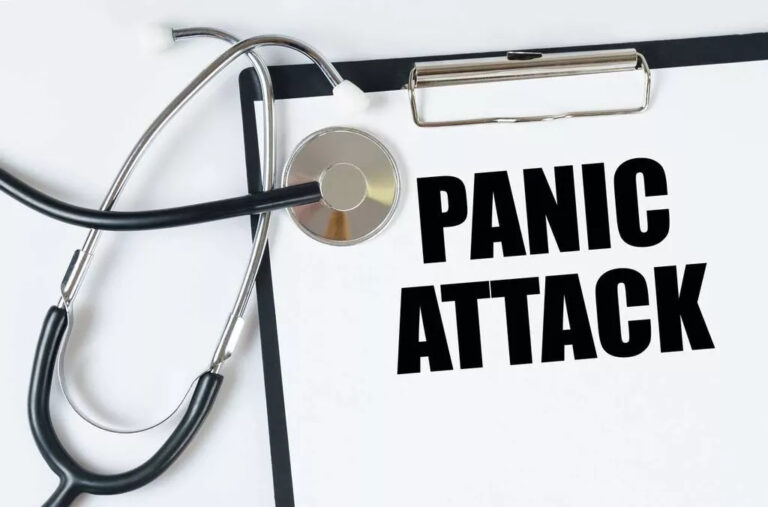Contents
Increase the transparency of interactions between prescribers and drugmakers. Nurse practitioners and physician assistants write substantial numbers of opioid prescriptions in the United States. Increased transparency regarding gifts and payments to these providers from drug and device manufacturers can help reduce the harms of opioid misuse.

It also requires the FDA to develop and update a list of controlled substances to refer to the customs agency for screening of international mail. Since the 1990s, more than 700,000 people in the US have died of drug overdoses, mostly driven by the rise in opioid-related deaths. That’s more people than live in big US cities like Denver and Washington, DC. Some estimates predict that at the current rate, hundreds of thousands more could die in the next decade of opioid overdoses alone.
It’s the highest number ever recorded in a one-year period, and a more than 21% increase compared to the previous year. While the category include all drug overdose deaths, the CDC says the increase is largely driven by synthetic opioids. The law increases access to prevention and treatment for women and children and on reunifying families broken apart by addiction.
Trump just signed a bipartisan bill to confront the opioid epidemic
Yet drug addiction continues its grim march across the U.S., having contributed to the deaths of more than 470,000 Americans over the past two decades. The administration’s move comes at a time when the U.S. is again facing record levels of drug overdose deaths, according to the Centers for Disease Control and Prevention. Botticelli attributes the office’s accomplishments to the Affordable Care Act, which, along with Medicaid expansion, increased the number of people with insurance that covered substance-use-disorder treatment. In the end, the fate of Obamacare could affect the opioid crisis just as much as Trump’s new opioid act itself.
Drug policy experts say things could grow even worse in the months ahead if Trump is successful in dismantling the Affordable Care Act. “Because of the severity of the crisis, and particularly in states like mine, people are willing to work together and join hands and figure out how to solve it and forget the politics,” Portman said. The widespread nature of the addiction problem may have helped the legislation get across the finish line in an otherwise deeply divided Congress, Portman said. There are also measures that seek to curtail foreign shipments of illegal drugs to the United States.
It also increases the number of patients whom individual providers can treat with buprenorphine. The law also expands access to treatment by paying opioid treatment programs, which historically have not been eligible for Medicare reimbursement, a bundled MAT payment for medication, counseling, and treatment. The Congressional Budget Office projects this will cost $250 million over the next decade.

After watching President Donald Trump target the son of former Vice President Joe Biden for his history of substance abuse, Urban, a Republican from Delphos, Ohio, was reminded again of the shame her son lived with during his own battle with addiction. As Trump nears the end of his first term, some supporters, including Urban, feel left behind by his administration’s drug policies. Harris also said allowing doctors to treat opioid addiction as they treat other medical conditions, without additional regulatory hurdles, will reduce the stigma that alcoholism and the blame cycle has often shaped the healthcare response to substance use disorders. The Trump administration introduced new addiction treatment guidelines Thursday that give physicians more flexibility to prescribe a drug to patients struggling with opioid addiction. With the nation reeling from an epidemic of drug overdose deaths, President Trump signed legislation Wednesday that is aimed at helping people overcome addiction and preventing addictions before they start. But the nation’s overwhelming opioid epidemic has provided one of those few opportunities.
President Trump Signs Bipartisan Bill to Fight Opioid Crisis
During trade talks with China last year, Trump pushed to slow that country’s exports of fentanyl. The expansive package focuses on improving access to treatment services by lifting certain restrictions on Medicaid and Medicare coverage, as well as backing the creation of comprehensive opioid recovery centers. The law also contains money for research into non-addictive pain treatment, more distribution of anti-overdose medications, and more education about best practices for prescribing drugs. President Donald Trump speaks during an event to declare the opioid crisis a national public health emergency in the East Room of the White House, Oct. 26, 2017.

“And to this day, I’ve never had a drink. And I have no longing for it. I have no interest in it.” This site is protected by reCAPTCHA and the Google Privacy Policy and Terms of Service apply. But the alcohol toxicity and withdrawal congressional proposals, despite some positive moves, don’t do nearly enough on any of these fronts, experts warned. The new law will almost certainly mitigate some of the crisis and save some lives.
Public Health and Research
But while some progress was made, critics point to serious missteps behind the scenes that hampered federal efforts, including the decision to sideline and defund the Office of National Drug Control Policy (ONDCP. Kilmer also credits Trump for “pressuring China to better regulate some of its synthetic opioids.” “We are going to stop the inflow of drugs into New Hampshire and into our country 100%,” Trump promised. Drug addiction is one of the few issues where polling shows that both Democrats and Republicans agree that it is a “very big” problem. And then we need to create the structural change, where you don’t need federal funding anymore; it’s built into the system. It’s containing it, so no more will our loved ones become addicted to opioids unnecessarily.
- The legislation is an amalgamation of more than 70 bills introduced by Republicans and Democrats.
- Before coronavirus hit, opioids were widely viewed as the nation’s top public health crisis.
- Today, drug overdose is the leading cause of accidental death in the United States — the majority of those lethal episodes involve an opioid.
- More importantly, it ensures that residential treatment is part of a continuum of services that includes outpatient treatment, and takes steps to ensure that each patient receives appropriate care.
He also worked with the Senate and House staff on the bill that was signed today. It’s a nonprofit group he founded to help families cope with the addiction of a loved one. The number of prescription opioids legally sold nearly quadrupled from 1999 to 2010, despite no change in the amount of pain that Americans reported, according to the U.S. Today, drug overdose is the leading cause of accidental death in the United States — the majority of those lethal episodes involve an opioid. The president instead will ask the acting secretary of Health and Human Services to declare a public health emergency, which allows the agency to waive restrictions and deploy medical personnel to rural areas where medical options are limited. Advances new initiatives to educate and raise awareness about proper pain treatment among health care providers.
On the campaign trail, he would often speak about the opioid crisis in states like New Hampshire and Ohio, but would often cite drugs pouring from across the U.S.-Mexico border as a primary driver of the problem. This gives federal agencies the authority to cut red tape hindering recovery missions. Requests effective treatments for alcohol use disorders for funding from the Disaster Relief Fund come from a governor who claims the circumstances has overwhelmed his or her state’s resources. However, experts have told ABC News that declaring it an official national emergency, as Trump long touted he would eventually do, might have been a mistake.
Medicare providers are required to use e-prescribing for opioids, and Medicare prescription drug plans are required to establish drug management programs for at-risk enrollees. The Food and Drug Administration can now require drug manufacturers to alter opioid packaging so doctors can prescribe smaller quantities, such as a three- or seven-day supply, rather than the traditional 30-day supply. The FDA can now also require manufacturers to give patients safe options for disposing of medications, such as charcoal bags that can be used to destroy unneeded medications at home, thus reducing the risk of medications being misused later. But it doesn’t pay for a wide and sustained expansion of addiction treatment, which is the policy approach that many experts argue is necessary. More than 83,000 people died of drug overdoses in the U.S. in the 12 months ending in June 2020, the CDC said.
Increasing the Availability of Therapy and Medication-Assisted Treatment
Behavioral health providers, such as select community mental health centers, hospitals, nurse practitioners, and clinical social workers, will be eligible for a Medicare incentive payment if they adopt certified electronic health records technology. To put this in context, the New York Times this year asked 30 experts how they would spend $100 billion over five years to address the opioid epidemic — a number comparable to how much the US spends domestically on HIV/AIDS. That may sound like a lot, but some experts cautioned that even that amount of cash may not be enough. And while Congress has allocated a few billion dollars here and there to address the crisis in recent years, the sum total falls short of the tens of billions experts say is needed to quickly reverse the opioid epidemic. Attempts to improve coordination between different federal agencies to stop illicit drugs like fentanyl at the border, and gives agencies more tools to improve detection and testing at border checks. President Donald Trump on Wednesday signed a package of bills to confront the nation’s opioid epidemic, following bipartisan approval for the measures in the House and Senate.
Biden has sometimes noted his personal connection to drug addiction, citing his son Hunter’s struggles. Biden responded by casting his son as no different than many other Americans who struggle with addiction. The longtime Republican said she plans to vote for Trump again, but also notes that drug addiction has no political bias and that it can touch anyone. The exchange over Hunter Biden’s struggle with addiction was brief, and neither candidate was asked a follow-up question about their plan to tackle the nation’s drug addiction and overdose crisis.
Opioid Deaths May Be Starting To Plateau, HHS Chief Says
The new law will also allow nurse practitioners and physician’s assistants to prescribe buprenorphine, another one of the three federally approved medications used for addiction treatment. It calls for $8 billion in federal funding over the next five years and tries to do a lot of different things, including reducing the illegal supply of opioids and increasing treatment for those who are addicted. To provide buprenorphine, another FDA-approved medication for OUD, prescribers must follow federal restrictions. The law permanently allows nurse practitioners and physician assistants to prescribe the medication and creates a five-year trial period during which other providers, such as clinical nurse specialists, can become qualified prescribers.
On average, more than 130 people die in the United States each day from an overdose. And opioids have ravaged families and communities, as millions of people have misused the drugs. President Donald Trump officially declared the opioid epidemic a “national public health emergency” in an announcement at the White House Thursday. States will be required to ensure that former foster children continue to have Medicaid coverage across state lines until the age of 26 — a provision sought by children’s hospitals and other stakeholders. This ensures health coverage for vulnerable patients and a payer source for the clinical systems that serve them.
The Administration is working to ensure first responders are supplied with naloxone, a lifesaving medication used to reverse overdoses. Customs and Border Protection saw a 66 percent increase in the advance electronic data they received on international mail packages in FY 2018 compared to FY 2017. In fiscal year 2017, DOJ increased the average Federal sentence for drug trafficking to the strongest sentences since 2013. The Administration will scale up efforts by DOJ’s Joint Criminal Opioid Darknet Enforcement team to stop illicit opioid sales online. Emergent BioSolutions, a biopharmaceutical company, will offer free Narcan nasal spray, which can help reverse an opioid overdose, to over 16,500 public libraries and 2,700 YMCAs.